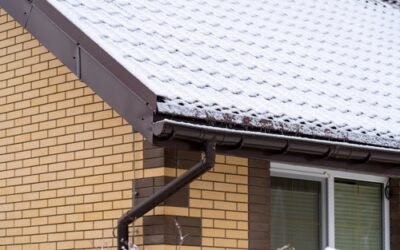Your siding shields your home from rain, wind, pests, and UV rays—but it also needs protection. With regular maintenance, you’ll maximize its lifespan, preserve curb appeal, and avoid costly repairs. Here are the must-do tasks every homeowner should tackle to keep siding in top shape for decades.
1. Clean Annually with Gentle Washing
Dirt, pollen, algae, and airborne pollutants cling to siding and can degrade finishes. Schedule a yearly wash in spring or fall using a garden hose or low-pressure washer, mild detergent (or a vinyl-safe cleaner), and a soft-bristle brush. Avoid high-pressure settings that can force water behind panels or strip paint. Focus on shaded areas where growth thrives, and rinse thoroughly to prevent residue.
2. Inspect Seals, Trim, & Flashing Twice a Year
Every spring and fall, walk your home’s perimeter and look for cracked caulking around windows, doors, and siding joints. Check that trim pieces are tight against siding panels and that metal flashing over entrances deflects water properly. Replace failed sealants with high-quality, paintable exterior caulk to prevent moisture infiltration and wood rot underneath.
3. Clear Gutters & Downspouts
Clogged gutters cause water to back up, splashing onto siding and seeping behind panels. Clean gutters at least twice a year, removing leaves, twigs, and debris. Ensure downspouts discharge at least 4 feet from the foundation to avoid moisture wicking into siding baseboards or the home’s structural walls.
4. Trim Trees & Shrubs
Vegetation rubbing against siding abrades surfaces, trapping moisture and inviting fungal growth. Maintain a 6- to 12-inch clearance between plants and siding. Prune branches and shrubs back at least one foot to allow airflow and sunlight, which help keep siding dry and discourage insects.
5. Manage Moisture at Ground Level
Ensure soil grade slopes away from your home—about 6 inches over the first 10 feet—to direct water runoff away from walls. Use gravel or landscape fabric at planting beds adjacent to siding, preventing mulch from pressing against walls and causing decay. Check for soggy spots or puddles after rain; correct drainage issues promptly.
6. Address Damage Promptly
Spotted a cracked panel, hail dent, or loose board? Don’t wait. Minor damage can let moisture and pests inside, leading to more extensive repairs. Keep spare panels or matching paint on hand for quick fixes. For larger repairs, hire a professional who can blend new materials seamlessly with existing siding.
7. Recoat or Restain When Needed
Wood and fiber-cement siding depend on protective coatings. Inspect paint or stain every 5–7 years for peeling, cracking, or fading. Sand rough spots before recoating and apply a primer suited to the material. For fiber-cement, use 100% acrylic paint designed for masonry to ensure proper adhesion.
8. Monitor for Pests & Mold
Regularly check for termite tubes, carpenter ant sawdust, or bee hives forming in wall cavities. Early detection allows targeted pest control before major damage. Likewise, watch for mold or mildew patches; treat with a diluted bleach solution (1 part bleach to 4 parts water) and rinse thoroughly. Always wear protective gear and follow label instructions.
9. Inspect Attic & Wall Cavities
Climb into your attic to look for daylight showing through the roof-wall intersections or water stains on sheathing. While not directly siding, these interior signs often relate to flashing or siding failures above. Catching leaks early prevents wood rot and mold in hidden areas.
10. Keep Records & Warranties Handy
Document all maintenance activities—dates, products used, and any repairs performed. Store warranty information for siding materials and labor. This record helps if you sell your home or if manufacturers require proof of upkeep for claims.
Conclusion
A little preventive care goes a long way toward extending your siding’s performance and appearance. By cleaning gently, inspecting seals, managing moisture, and addressing small issues immediately, you’ll protect your home’s exterior for decades. Incorporate these tasks into an annual maintenance checklist—and consider scheduling professional inspections every few years—to ensure your siding remains a resilient, attractive barrier against the elements.



